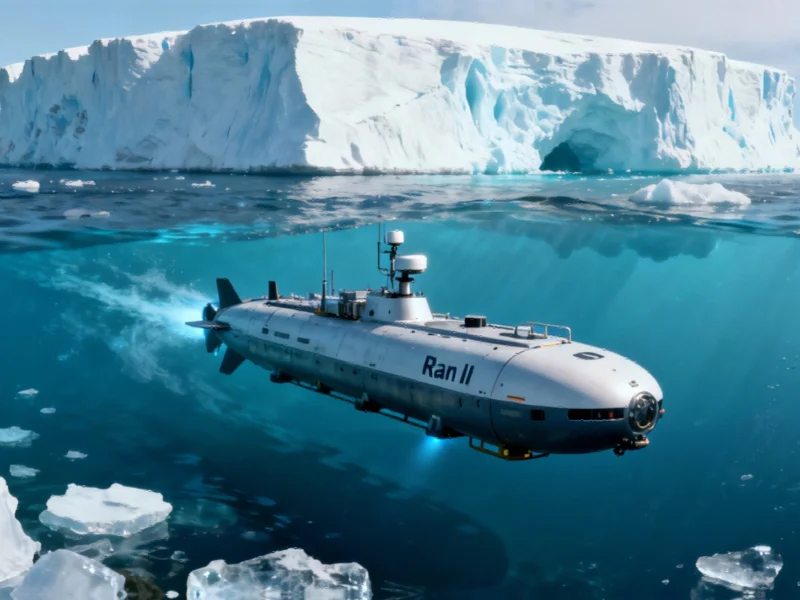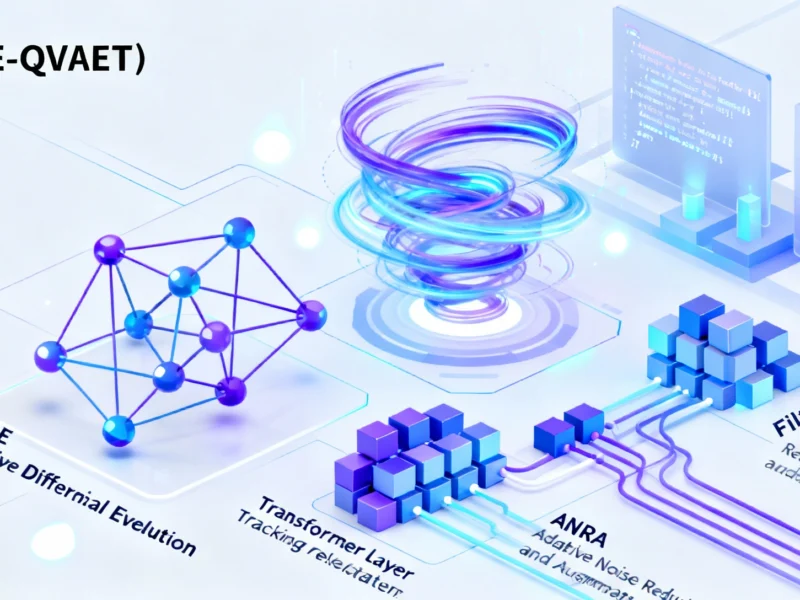Reviving Polar Exploration After Tragic Loss
The University of Gothenburg has finalized arrangements for a new autonomous underwater vehicle to replace the pioneering Ran submarine that disappeared beneath an Antarctic glacier in January 2024. This significant development, as confirmed in recent university announcements, marks a crucial step forward for polar research after the loss of one of the world’s most advanced research submarines.
The original AUV Ran had been instrumental in groundbreaking Antarctic research for six years, pushing the boundaries of what was possible in extreme underwater environments. “Ran represented the cutting edge of marine research technology,” explained Professor Anna Wåhlin, the oceanography expert who led the Antarctic expeditions. “Its loss was devastating, but the data it collected has transformed our understanding of glacial dynamics.”
From Tragedy to Technological Advancement
The disappearance of Ran during a high-risk mission under the Thwaites glacier could have spelled the end of Sweden’s ambitious polar research program. Instead, a combination of insurance funds and a generous donation from the Voice of the Ocean Foundation has enabled the acquisition of Ran II from Kongsberg AS, with delivery expected during the 2026/2027 winter season.
This revival comes at a time when technological advancements in computing systems are creating new possibilities for autonomous vehicles. The new submarine will build upon its predecessor’s legacy while incorporating crucial upgrades in emergency decision support and navigation systems, making it better equipped to handle the extreme conditions beneath Antarctic ice shelves.
Scientific Legacy and Future Potential
Before its disappearance, Ran had achieved what no other research vehicle had accomplished – becoming the first to venture beneath the Thwaites glacier, often called the “Doomsday Glacier” due to its potential impact on global sea levels. The close-up images and precise measurements of melting mechanisms collected by Ran provided invaluable data that satellite observations alone couldn’t capture.
The significance of this research parallels other groundbreaking discoveries in extreme environments that challenge our understanding of planetary systems. Professor Wåhlin reflected on Ran’s legacy: “The data we obtained is unique in the world and of tremendous value to international climate research. While we knew the risks, this outcome feels more meaningful than the vehicle simply becoming obsolete in storage.”
Enhanced Capabilities for Extreme Environments
Ran II will maintain the same core capabilities that made its predecessor so valuable to polar science, but with critical improvements that address the challenges encountered during previous missions. The enhanced navigation systems will allow for more precise mapping of underwater glacial formations, while the robust emergency protocols will provide additional safety margins during missions beneath unstable ice structures.
These technological improvements reflect a broader trend in advanced manufacturing and systems integration across multiple industries. The submarine’s ability to operate autonomously in completely inaccessible environments – under glaciers, thick sea ice, and in deep-sea regions – makes it an unparalleled tool for understanding climate change impacts on marine systems.
Expanding Research Horizons Through Partnership
The collaboration between the University of Gothenburg and Voice of the Ocean Foundation extends beyond the replacement vehicle itself. Through VOTO’s Ocean Support initiative, researchers will gain access to Ran II for studies in nearby marine environments like the Baltic Sea, creating opportunities for more frequent research missions and broader scientific applications.
Sanna Thimmig Johansen, CEO of Voice of the Ocean, emphasized the importance of this partnership: “We’re living in a time when the ocean needs our attention more than ever. This investment will deepen our understanding of oceanic changes and spread that knowledge widely. We’re committed to strengthening Swedish research at the forefront of polar science.”
The biological research potential of these missions connects to broader scientific investigations into survival mechanisms in extreme conditions, from microscopic organisms to complex robotic systems operating in hostile environments.
Sweden’s Leadership in Autonomous Marine Research
When Ran first entered service in 2018, it positioned Sweden among an elite group of only three nations operating research AUVs of this capability level. Over six years of operation, the vehicle conducted surveys in both Swedish and international waters, establishing the country as a leader in AUV-based polar research and international method development.
The rapid advances in artificial intelligence are creating new opportunities for interpreting the massive, high-resolution datasets collected by vehicles like Ran II. These developments mirror broader technological evolution across computing platforms, where legacy systems must adapt to new challenges and capabilities.
The Future of Autonomous Polar Exploration
The capacity developed in Sweden over the past decade has laid the foundation for strengthened international cooperation in polar research. Ran II represents not just a replacement for lost equipment, but a significant step forward in autonomous underwater research capabilities.
As climate change accelerates the melting of polar ice, the data collected by vehicles like Ran II becomes increasingly crucial for predicting sea level rise and understanding the complex interactions between ice, ocean, and atmosphere. The continued investment in this technology demonstrates Sweden’s commitment to maintaining its position at the forefront of climate science and polar research, ensuring that the legacy of the original Ran continues to drive scientific discovery in Earth’s most challenging environments.
Based on reporting by {‘uri’: ‘phys.org’, ‘dataType’: ‘news’, ‘title’: ‘Phys.org’, ‘description’: ‘Phys.org internet news portal provides the latest news on science including: Physics, Space Science, Earth Science, Health and Medicine’, ‘location’: {‘type’: ‘place’, ‘geoNamesId’: ‘3042237’, ‘label’: {‘eng’: ‘Douglas, Isle of Man’}, ‘population’: 26218, ‘lat’: 54.15, ‘long’: -4.48333, ‘country’: {‘type’: ‘country’, ‘geoNamesId’: ‘3042225’, ‘label’: {‘eng’: ‘Isle of Man’}, ‘population’: 75049, ‘lat’: 54.25, ‘long’: -4.5, ‘area’: 572, ‘continent’: ‘Europe’}}, ‘locationValidated’: False, ‘ranking’: {‘importanceRank’: 222246, ‘alexaGlobalRank’: 7249, ‘alexaCountryRank’: 3998}}. This article aggregates information from publicly available sources. All trademarks and copyrights belong to their respective owners.



